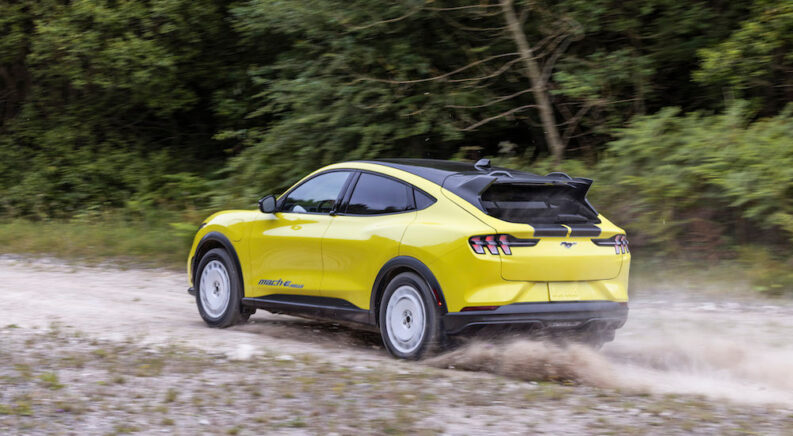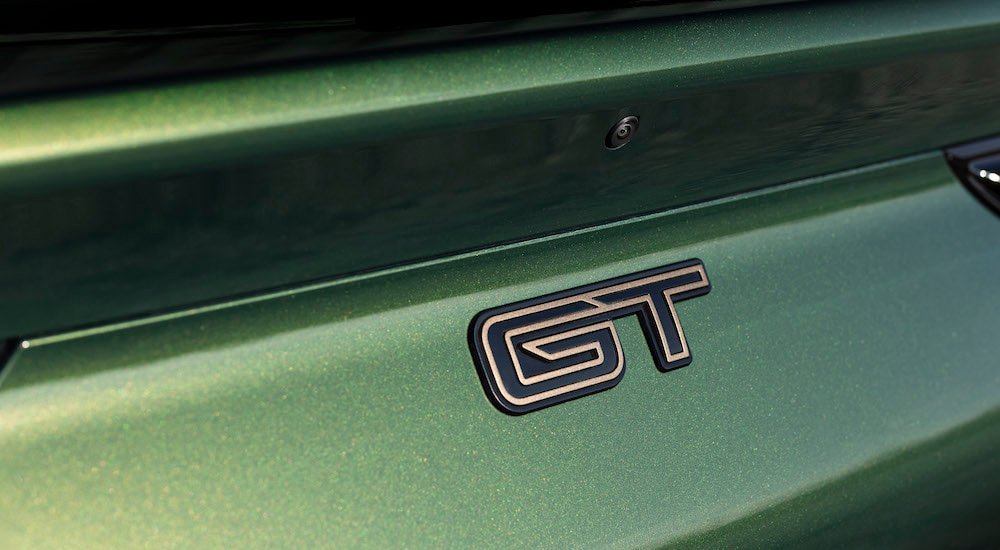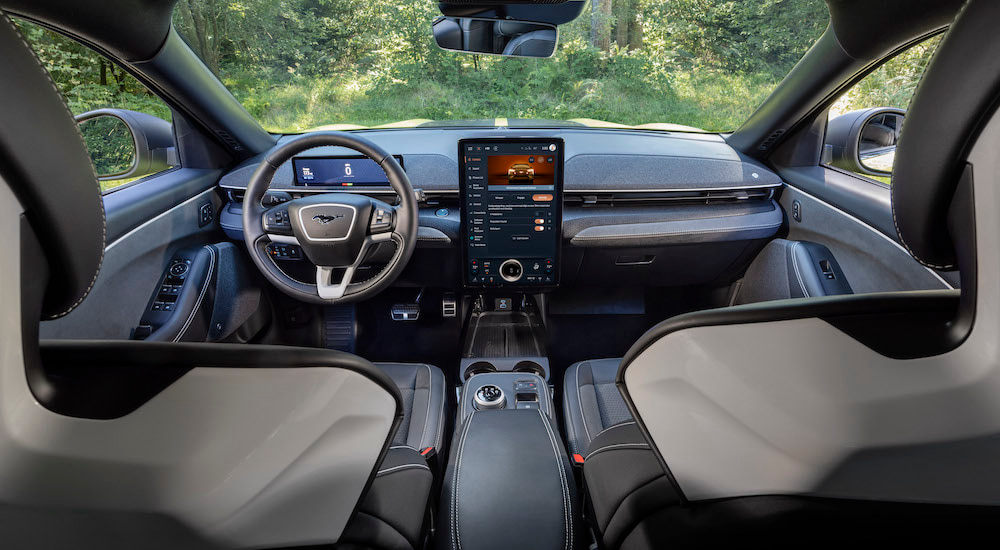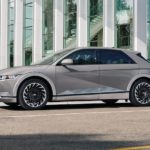While other forms of motorsports rely on highly specialized race cars that are virtually unusable outside of a track, rally cars must handle a wide range of road conditions and are commonly based on street-going vehicles. In fact, most of them are even street-legal and transit open road sections between the special stages where they compete. That’s why it’s no surprise that so many rally cars have gone full circle and inspired production versions equipped with motorsports-ready features. Cars like the Mitsubishi Lancer Evolution, Subaru WRX STI, and Audi Quattro have all sparked excitement from car enthusiasts. Now, a new generation of rally-inspired production cars from WRC-winning manufacturers is hitting the market, and they are electrifying, both figuratively and literally.
Electric vehicles have become known for their mind-bending acceleration and have begun figuring more prominently in motorsports, so it’s unsurprising that someone would decide to release a rally-inspired EV. However, instead of just one such car, we have been treated to two. Whether you are looking for a 2025Ford Mustang Mach-E for sale or a 2025 Hyundai IONIQ 5, you’ll be able to experience a bit of these two manufacturers’ rally experience in a powerful electric vehicle that incorporates some surprisingly serious features. The Mustang Mach-E Rally and IONIQ 5 XRT are set to impress and may just open the floodgates to a new generation of soon-to-be-legendary rally-inspired options.
Competitors on the Circuit and the Street
If you are not up to speed on the current World Rally Championship scene, three manufacturers currently compete in the top-level Group Rally1: Toyota, Ford, and Hyundai. Toyota uses the GR Yaris, Ford has the Puma, and Hyundai runs the i20 N. Unfortunately, none of those vehicles (in a rally variant or their standard version) are available in the American market. However, all three manufacturers now offer a rally-inspired option filled with motorsports features for American drivers to enjoy.
While Toyota took the conventional route and powered the GR Corolla with a turbocharged gasoline engine (although a 300 hp three-cylinder is anything but conventional compared to other gasoline options), Ford and Hyundai have taken a decidedly different route. Some of that may be because they lack suitable gasoline-powered cars on which to base a rally variant, but the end result is that they both choose to build on their electric compact SUVs, the Ford Mustang Mach-E and the Hyundai IONIQ 5.
Both of these EVs already have fairly impressive performance variants designed for paved roads, so transforming them into rally-inspired cars wasn’t too difficult. However, Ford and Hyundai eschewed the easy route of slapping on some special graphics and calling it a day. Instead, they made fairly substantial upgrades to their models to prepare them for high-speed thrills on dirt roads. However, Ford arguably did the better job of producing a more rally-ready vehicle with some traditional off-road features that Hyundai decided not to add. Is it enough to make the Mach-E the better option? We’ll have to see.
High-Speed Thrills
By now, just about everyone knows how fast electric vehicles are, and the Mustang Mach-E and IONIQ 5 are no exception. The top powertrain configuration from Ford, which was redesigned with a more powerful motor built in-house for the 2024 model year, produces no less than 480 hp and 700 lb-ft of torque. That’s enough for a 3.3-second launch from zero to 60 mph in the Mustang Mach-E GT Performance trim, which comes with sticky summer tires. The Mustang Mach-E Rally uses the same powertrain, although its narrower Michelin CrossClimate2 all-season tires sacrifice a bit of acceleration on the pavement for better handling in the dirt.
The IONIQ 5 provides up to 641 ponies and 568 lb-ft in its ultra-high-performance N variant. Combined with that version’s simply massive 275-width Pirelli P Zero PZ4 tires (the Mach-E GT Performance gets by with merely 245-width tires), that’s enough to get to 60 mph in three seconds flat. However, the XRT variant doesn’t get this powertrain. Instead, it has to make do with Hyundai’s standard dual-motor setup, which produces 320 hp and 446 lb-ft. That’s only good for about a 4.5-second zero to 60 time, putting it decidedly behind the Mach-E Rally. However, 4.5 seconds is nothing to look down on as it’s still noticeably faster than gasoline-powered rally-inspired options like the WRX or GR Corolla.
Ready to Rally
Power alone is not enough to make a rally car. The power either of these models offers is largely wasted on unpaved surfaces, even with all-wheel drive and the incredibly fast-reacting traction control enabled by electric motors. A real rally car also needs ground clearance, underbody protection, and other upgrades to prepare it for the dirt. Ford and Hyundai again put in the work here, as expected of WRC manufacturers, but Ford took things a step further when upgrading the Mach-E.
Hyundai gives the XRT its rally street cred with a cool digital camo design on its unique front bumper, a pair of bright red front tow hooks, and a set of rugged 10-spoke 18-inch wheels. A 23 mm suspension lift brings the total ground clearance to seven inches and provides a 19.8-degree approach angle and 30-degree departure angle. However, Hyundai neglected to add underbody protection, so you will want to avoid testing those numbers. This is especially worrying in an EV, which positions the battery under the vehicle. While the battery pack is protected against your average road debris, you do not want to have contact with a serious obstruction like a rock sticking up out of a dirt road.
In contrast, Ford takes things even more seriously with the Mach-E Rally. Instead of the largely ornamental front tow hooks, Ford has inset the grille with a pair of functional LED fog lights that bring to mind the light-covered rally cars of old. There is also still a concealed recovery point, should it be needed. There is also a huge rear wing, and the car rides on some seriously rugged rally-style wheels that are almost completely solid while still providing enough airflow to cool the Brembo brake calipers. A one-inch suspension lift brings the total ground clearance to 5.8 inches. This is less than the IONIQ 5 XRT, but Ford makes up for that with additional underbody protection for the powertrain components. Ford also includes protective film and available mud flaps to shield the paint from pebbles and dirt kicked up during your adventures.
Raising the Bar for Electric Cars
The enthusiast-oriented EV market is still in its infancy, and I don’t think anyone expected two manufacturers with WRC history to release rally-inspired options. However, the new Mustang Mach-E Rally and IONIQ 5 XRT are opening up a whole new segment for car shoppers looking to have fun off the pavement. Which manufacturer did it better? The jury is still out, as the XRT has yet to make it into the hands of drivers. Hyundai certainly gets points for its extra ground clearance, but Ford delivers more power, additional performance features, and extra underbody protection. Given both manufacturers’ history in the highest level of rally, both of these vehicles should provide a ton of fun. For now, it looks like Ford has pulled ahead.






